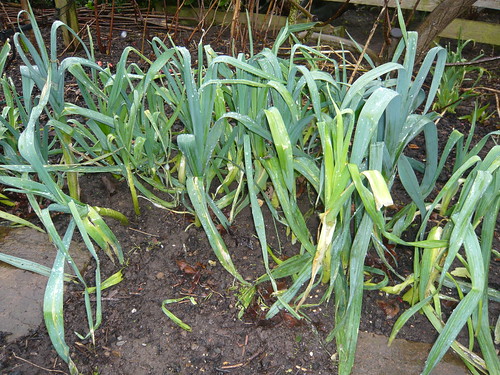
Leek Moth
- Will not affect ornamental alliums
- White or brown patches develop where leaves ahve been eaten by caterpillars.
- Larvae bore into bulbs or stems causing secondary rots.
- More prevalent near the coast where two generations in May and October can cause problems
- No effective insecticide for home gardeners
- Keep plants well watered in summer for strong growth
- In severe cases grow under fleece
Onion White Rot
- Affects onions garlic shallots but less severe on leeks.
- Symptoms include yellow and wilting leaves
- Roots rot and leave mould and black sclerotia in the soil which can survive to cause problems for 8 years
- Plants become loose in the soil and start to go soft.
- Most severe in cool wet summers
- Transmitted by contaminated soil not airborne
- Control by destroying affected plants before sclerotia form. There is no chemical control.
- Avoid spreading contaminated soil on boots.
